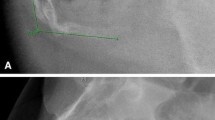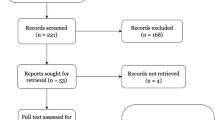Abstract
Purpose of Review
Coccygodynia is pain within the coccyx area. The diagnosis is made clinically with symptoms of pain in the coccyx region and worsening pain in sitting position. The initial treatment is conservative therapy. For patients who do not respond to conservative therapies, there are further interventions available. This includes local injection of local anesthetics and steroids, neurolysis of sacral nerve roots, caudal epidural block, pulse radiofrequency (PRF), intra-rectal massage and manipulation, ganglion impar block, levator ani massage and stretching, coccyx manipulation, and coccygectomy. The purpose of this review is to evaluate the efficacies of these interventions in the treatment of coccygodynia.
Recent Findings
Literature search was performed with the keywords including coccygodynia, treatment, and coccygectomy, on PubMed and Google Scholar between August 2012 and August 2017. Thirteen studies with patients age 18 and over who underwent treatments for coccygodynia were selected for analysis. These treatments include conservative therapies (physical therapy and capsaicin patch), interventional techniques (local injections with steroids and local anesthetic, pulsed radiofrequency ablation of ganglion impar, extracorporeal shock wave therapy), and surgical techniques (complete and partial coccygectomies). The results from these studies demonstrated that most patients had significant pain relief with these techniques.
Summary
Our literature review demonstrated various interventions including coccygectomy can be effective in the treatment of coccygodynia refractory to conservative therapies. There is a growing body of clinical evidence to support that coccygectomy is an effective treatment for patients with debilitating pain who had failed interventional therapies. Further randomized control studies should be conducted to examine duration of pain relief after coccygectomy and associated surgical complications.
Similar content being viewed by others
References
Papers of particular interest, published recently, have been highlighted as: • Of importance
Zundert JV. In: Evidence-based interventional pain practice: according to clinical diagnoses. Oxford: Wiley-Blackwell; 2012. p. 103–6.
Kwon H, Schrot R, Kerr E, Kim K. Coccygodynia and coccygectomy. Korean J Spine. 2012;9(4):326–33. https://doi.org/10.14245/kjs.2012.9.4.326.
Awwad WM, Saadeddin M, Alsager JN, Alrashed FM. Coccygodynia review: coccygectomy case series. Eur J Orthop Surg Traumatol. 2017;27:961–5. https://doi.org/10.1007/s00590-017-1947-3.
Fogel G, Cunningham P, Esses S. Coccygodynia: evaluation and management. J Am Acad Orthop Surg. 2004;12(1):49–54. https://doi.org/10.5435/00124635-200401000-00007.
Frazier LM. Coccydynia: a tail of woe. N C Med J. 1985;46(4):209–12.
Peyton FW. Coccygodynia in women. Indiana Med. 1988;81(8):697. 8
Maigne JY, Doursounian L, Chatellier G. Causes and mechanisms of common coccydynia: role of body mass index and coccygeal trauma. Spine (Phila Pa 1976). 2000;25(23):3072–9.
Postacchini F, Massobrio M. Idiopathic coccygodynia. Analysis of fifty-one operative cases and a radiographic study of the normal coccyx. J Bone Joint Surg Am. 1983;65(8):1116–24.
Maigne JY, Guedj S, Straus C. Idiopathic coccygodynia: lateral roentgenograms in the sitting position and coccygeal discography. Spine. 1994;19(8):930–4.
Maigne JY, Lagauche D, Doursounian L. Instability of the coccyx in coccydynia. J Bone Joint Surg Br. 2000;82(7):1038–41.
Aggarwal A, Kumar S, Kumar D. Factors influencing the evaluation and management outcomes of coccygodynia: a literature review. J Back Musculoskelet Rehabil. 2013;26:105–15.
Foye PM. Coccydynia: tailbone pain. Phys Med Rehabil Clin N Am. 2017;28(3):539–49. https://doi.org/10.1016/j.pmr.2017.03.006.
Wray CC, Easom S, Hoskinson J. Coccydynia: aetiology and treatment. J Pone Joint Surg Br. 1991;73(2):335–8.
Mohanty PP, Pattnaik M. Effect of stretching of piriformis and iliopsoas in coccydynia. J Bodyw Mov Ther. 2017;21(3):743–6. https://doi.org/10.1016/j.jbmt.2017.03.024.
Levesque A, Riant T, Labat JJ, Ploteau S. Use of high-concentration capsaicin patch for the treatment of pelvic pain: observational study of 60 inpatients. Pain Physician. 2017;20(1):E161–7.
Cha YD1, Yang CW, Han JU, Song JH, Na W, Oh S, et al. Transsacrococcygeal approach to ganglion impar block for treatment of chronic coccygodynia after spinal arachnoid cyst removal: a case report. Medicine (Baltimore). 2016;95(39):e5010. https://doi.org/10.1097/MD.0000000000005010.
• Gunduz OH, Sencan S, Kenis-Coskun O. Pain relief due to transsacrococcygeal ganglion impar block in chronic coccygodynia: a pilot study. Pain Med. 2015;16:1278–81. This study highlights efficacy of ganglion impar block and limitations of repeated blocks for coccygodynia
Gopal H, Crory CM. Coccygodynia treated by pulsed radio frequency treatment to the Ganglion of Impar: a case series. J Back Musculoskelet Rehabilit. 2014;27:349–54.
Antoniadis A, Ulrich NH-B, Senyurt H. Coccygectomy as a surgical option in the treatment of chronic traumatic coccygodynia: a single-center experience and literature review. Asian Spine J. 2014;8:705–10.
• Kleimeyer JP1, Wood KB, Lønne G, Herzog T, Ju K, Beyer L, et al. Surgery for refractory coccygodynia: operative versus nonoperative treatment. Spine (Phila Pa 1976). 2017;42(16):1214–9. https://doi.org/10.1097/BRS.0000000000002053. This retrospective cohort study demonstrates coccygectomy as a successful surgical option for patients who have failed conservative therapy including injections.
Dalbayrak S, Yaman O, Yilmaz T, Yilmaz M. Treatment principles for coccygodynia. Turkish Neurosurgery. 2014; https://doi.org/10.5137/1019-5149.jtn.9505-13.0.
Marwan Y, Dahrab B, Esmaeel A, Ibrahim SA, Al-Failakawi J. Extracorporeal shock wave therapy for the treatment of coccydynia: a series of 23 cases. Eur J Orthop Surg Traumatol. 2017;27:591–8.
Haddad B, Prasad V, Khan W, Alam M, Tucker S. Favourable outcomes of coccygectomy for refractory coccygodynia. Ann Royal Coll Surg England. 2014;96:136–9.
Ramieri A, Domenicucci M, Cellocco P, Miscusi M, Costanzo G. Acute traumatic instability of the coccyx: results in 28 consecutive coccygectomies. Eur Spine J. 2013;22(Suppl 6):939–44. https://doi.org/10.1007/s00586-013-3010-3.
Galhom A, Al-Shatouri M, AboEl-Fadl S. Evaluation and management of chronic coccygodynia: fluoroscopic guided injection, local injection, conservative therapy and surgery in non-oncological pain. Egypt J Radiol Nucl Med. 2015;46(4):1049–55.
Marwan Y, Husain W, Alhajii W, Mogawer M. Extracorporeal shock wave therapy relieved pain in patients with coccydynia: a report of two cases. Spine J. 2014;14(1):e1–4.
Lin SF, Chen YJ, Tu HP, Lee CL, Hsieh CL, Wu WL, et al. The effects of extracorporeal shock wave therapy in patients with coccydynia: a randomized controlled trial. PLoS One. 2015;10(11):e0142475.
Author information
Authors and Affiliations
Corresponding author
Ethics declarations
Conflict of Interest
Yasmin Elkhashab and Andrew Ng declare no conflict of interest.
Human and Animal Rights and Informed Consent
This article does not contain any studies with human or animal subjects performed by any of the authors.
Additional information
This article is part of the Topical Collection on Anesthetic Techniques in Pain Management
Rights and permissions
About this article
Cite this article
Elkhashab, Y., Ng, A. A Review of Current Treatment Options for Coccygodynia. Curr Pain Headache Rep 22, 28 (2018). https://doi.org/10.1007/s11916-018-0683-7
Published:
DOI: https://doi.org/10.1007/s11916-018-0683-7




